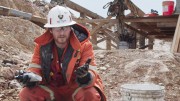Improvements in the technology of mineral processing combined with the recent increases in value of precious metals make re-treatment of some tailings deposits worthwhile commercial considerations.
I note an increase in examples of National Instrument 43-101 reports addressing the valuation of tailings deposits, but I believe the procedures used by some Qualified Persons are confusing and misleading.
My concern is that the precious metals content of the tailings is reported, in my view wrongly, in terms of “per tonne of material” rather than in terms of volume. I contend that it is practically impossible to estimate the weight of a unit of volume of tailings.
One reason for this, is that many tailings deposits are incompletely water-logged, leaving the uppermost few metres dry. The water level will likely fluctuate throughout the year, and the same volume of tailings will weigh a lot less when dry than when wet. Under such conditions, the impounded tonnage, but not the quantity of metal, will vary with the weather. For this reason, it is basic that the metal content be stated in terms of units of volume and not weight.
In a recently reported example from Mexico, the material’s bulk density is reported to be 1.40. If we assume a moisture content of 50%, then the solids have a density of 1.80, which is within the range to be expected, where the gangue of vein material treated was mainly quartz and calcite. The degree of variability of the bulk density within the deposit is not addressed. Several mills, each using a different process, fed this deposit so it is fair to expect the percentages of particle sizes to range widely.
This variability, especially where there is a variation in slime content, will influence the tailings’ porosity, and thus the water content.
Resources in the form of tailings deposits should be reported only in terms of weight of metal content per unit of volume, as is standard practice with placer material. Using fire assays to estimate the amount of contained metal from a collection of short lengths of sample holes is unlikely to be as relevant to the operator as results from cyanide or gravity treatment of all the material recovered from each hole.
Regulatory agencies should reject as deceptive all measures used to define a tailings resource that are based on weights of material.
Brian Hester
Vineland, Ont.



Be the first to comment on "Letter to the editor: The better way to value tailings"